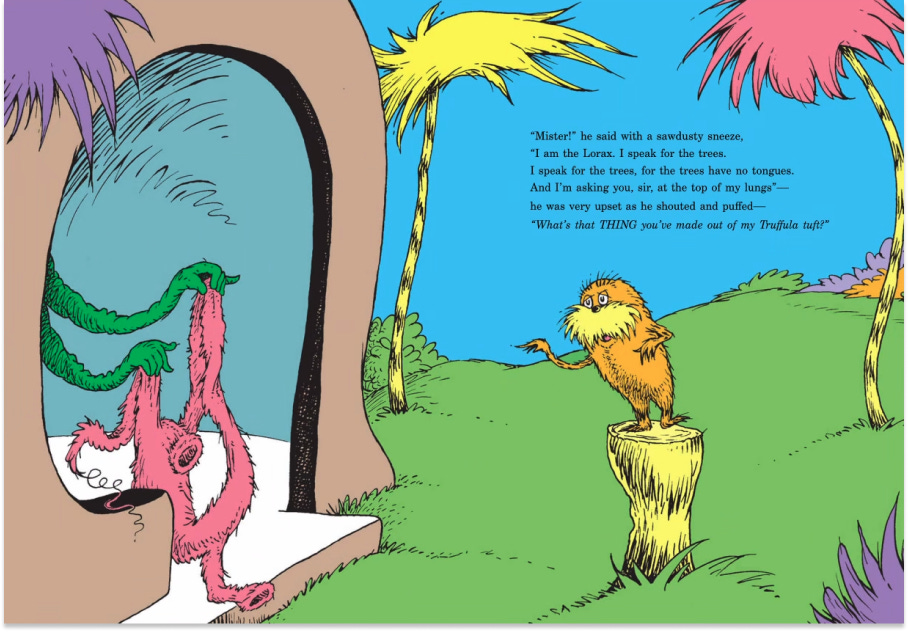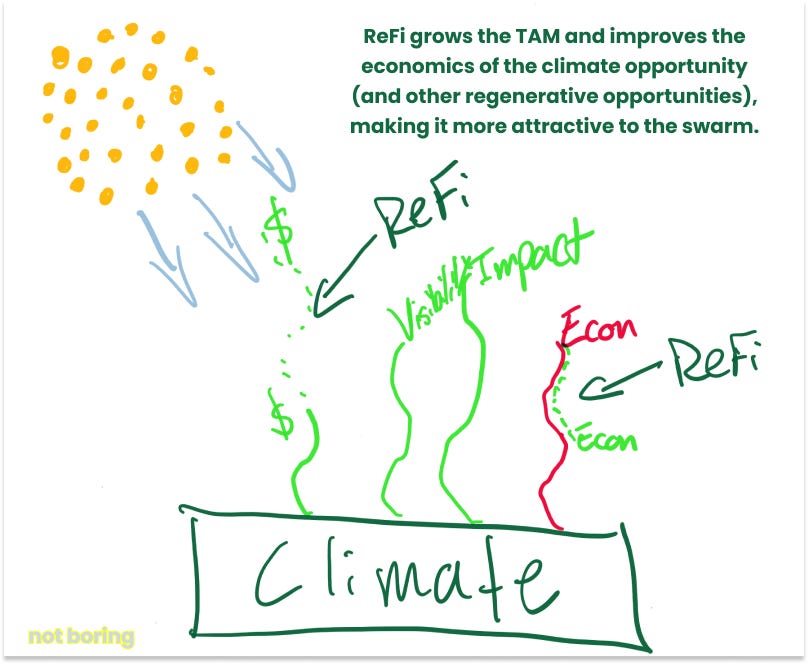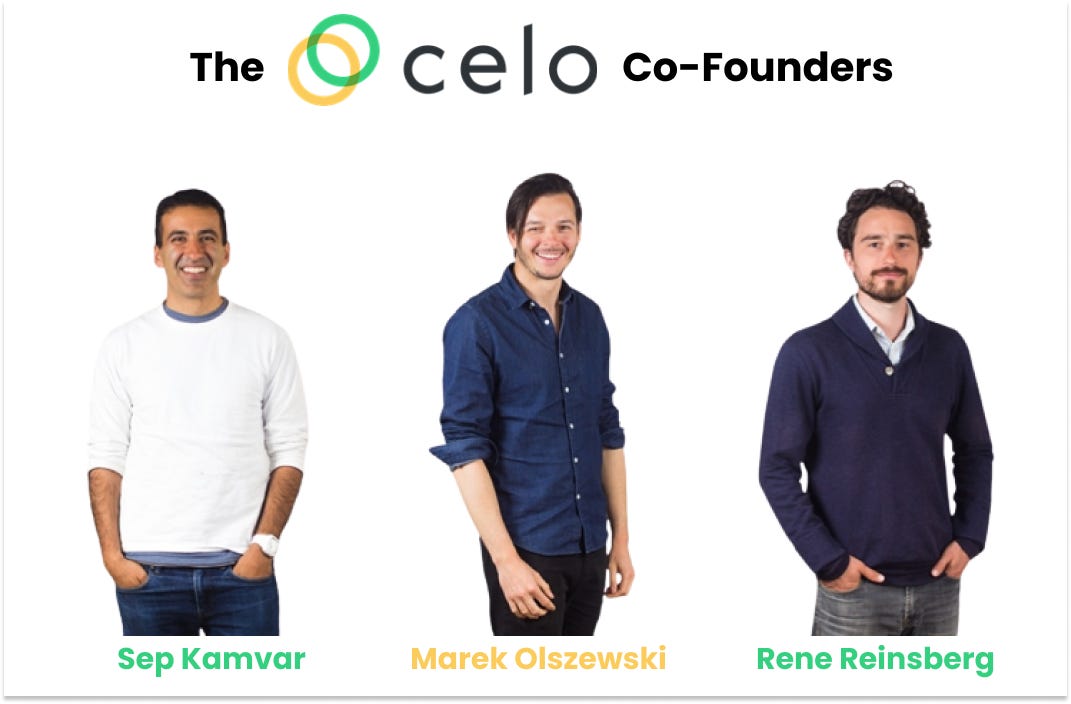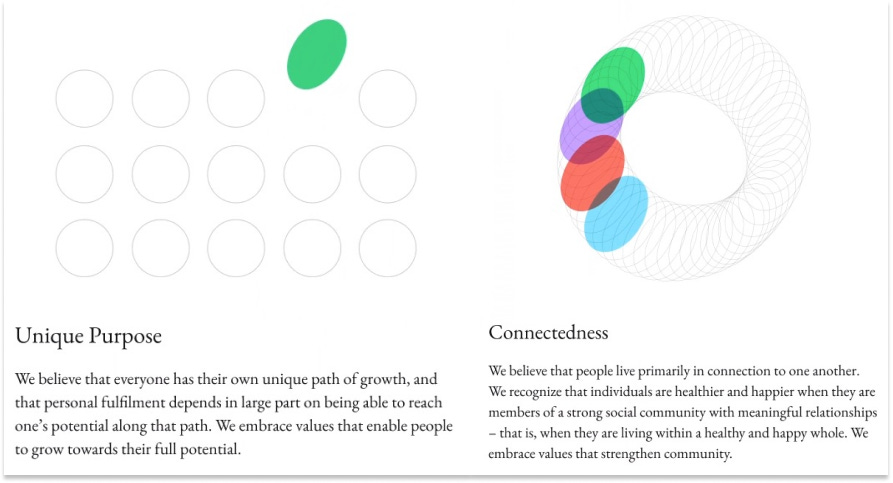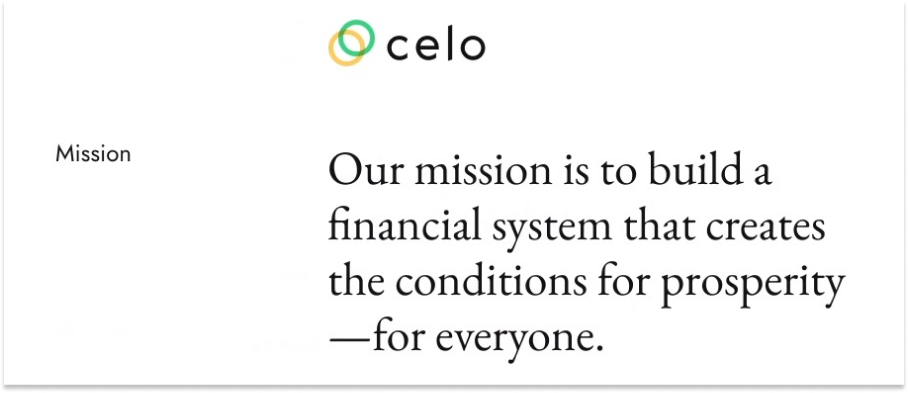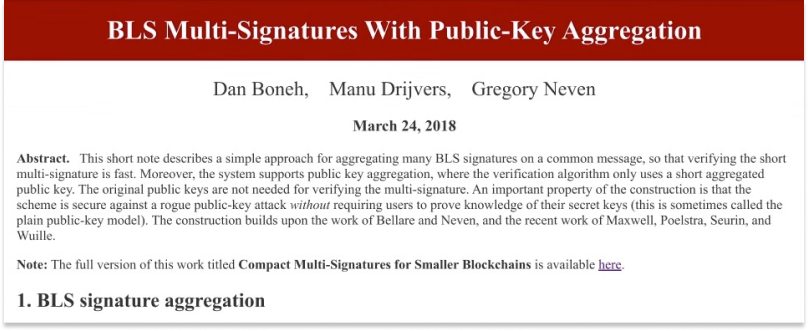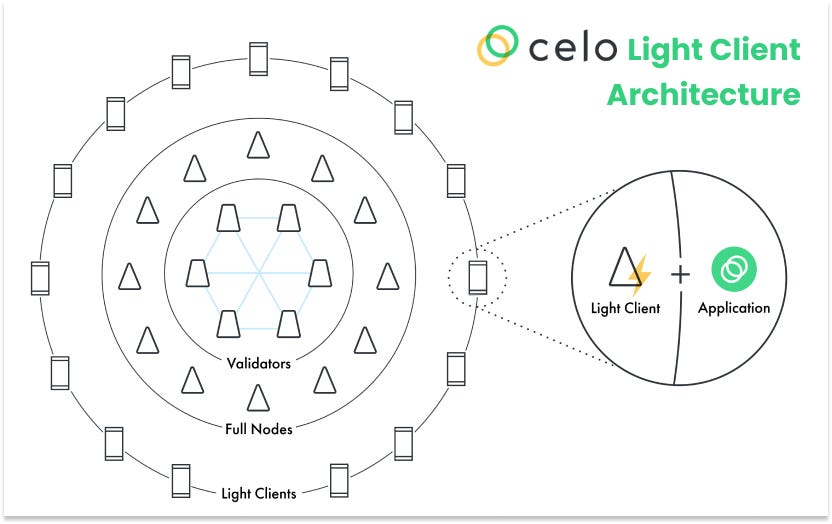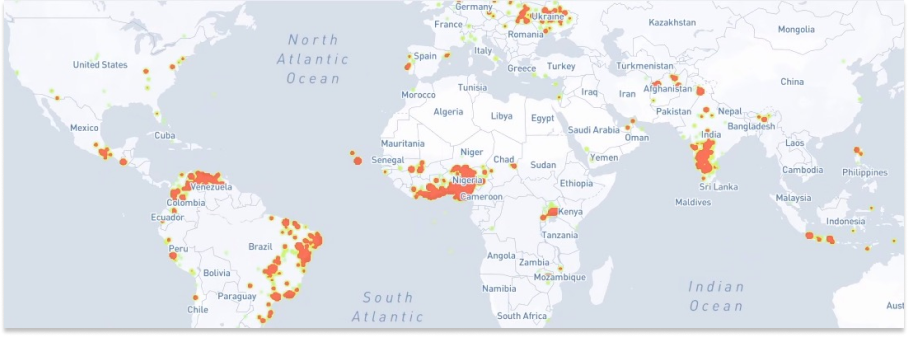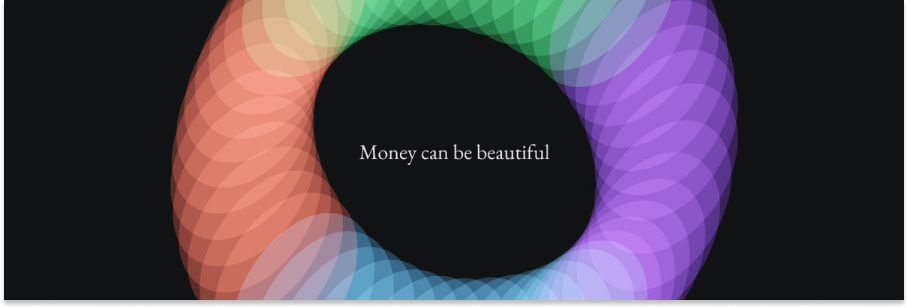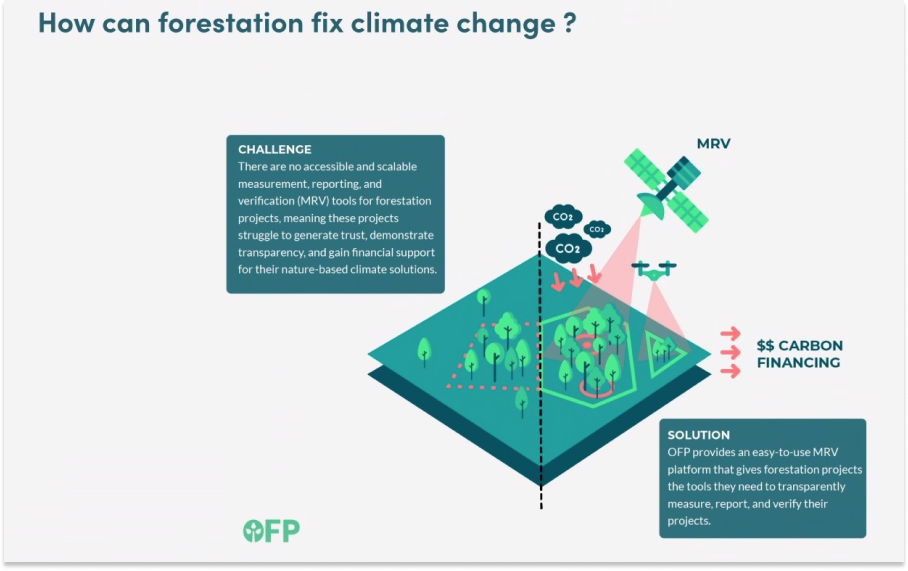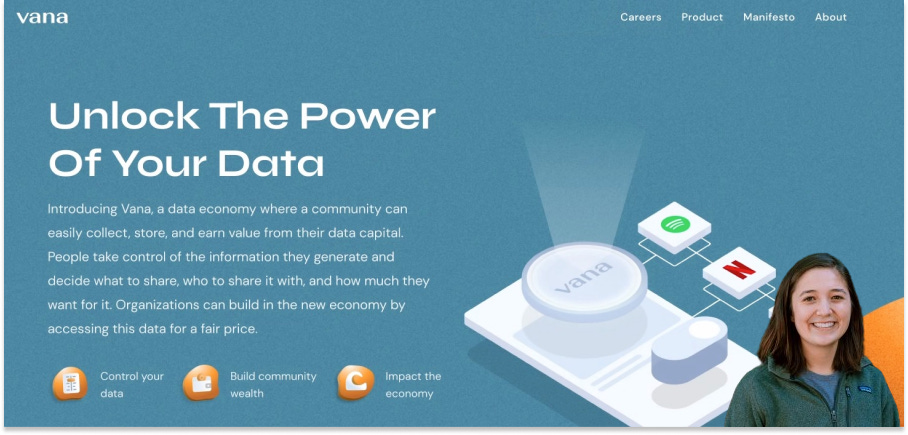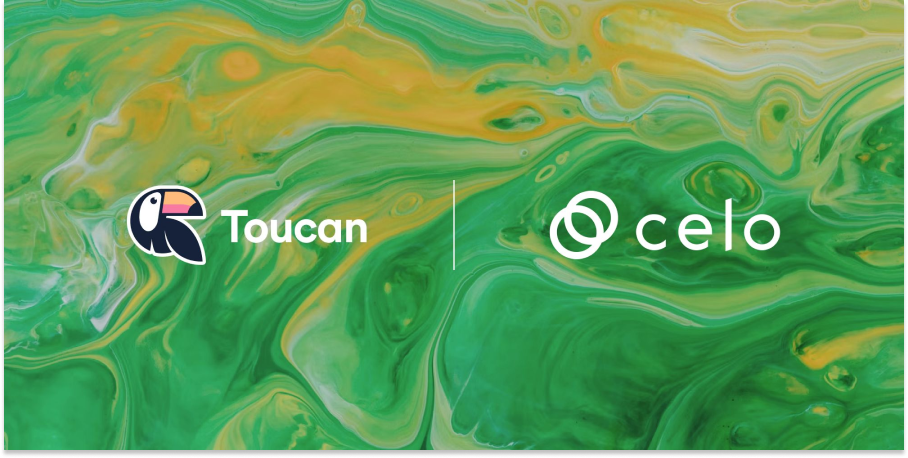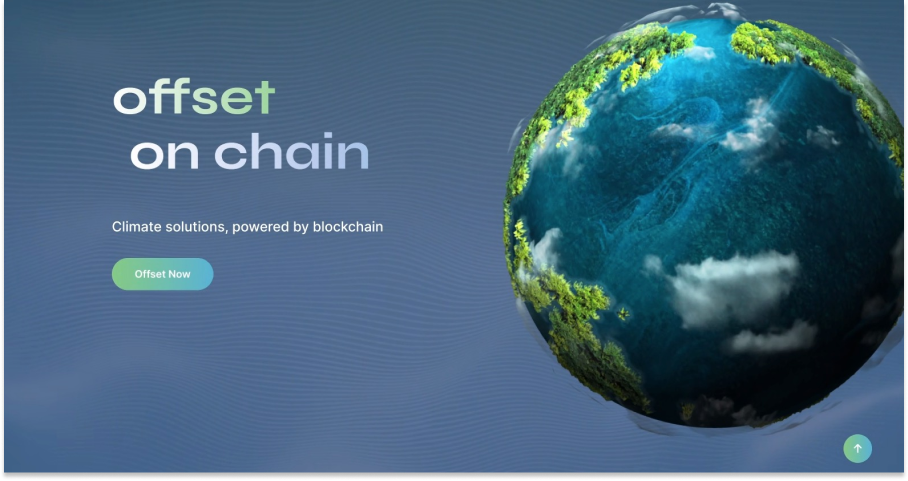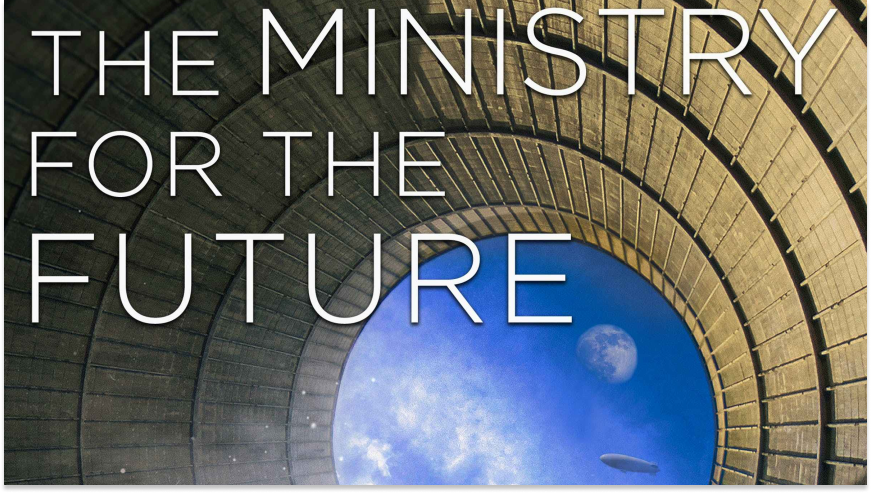Not Boring by Packy McCormick - Celo: Building a Regenerative Economy
Welcome to the 1,493 newly Not Boring people who have joined us since last Monday! If you haven’t subscribed, join 116,440 smart, curious folks by subscribing here: 🎧 If you’d rather listen to this essay, head to Spotify or Apple Podcasts (soon) Hi friends 👋, Sometimes I write about topics that I think are so important that I get worried I won’t do them justice. I worry that since I’ve gotten things wrong or gotten overly excited in the past, I won’t have as much gravitas as I need to throw behind the topic. I worry that I’m not quite good enough to fit the puzzle together in the way it deserves. Today is one of those topics. Regenerative finance (ReFi) is one of those radical ideas that are easy to dismiss as overly idealistic until it worms itself into your brain and you begin to wonder things like, “Well, why not?” and “Wouldn’t it actually make a lot more sense to do it this way?” If you didn’t do anything for Earth Day on Friday — no judgment — then take the time to read this piece and think about ways you might contribute. Today is a sponsored deep dive on Celo (more on the process here) – and if you’re building a ReFi project, I hope this gets you to take a look at Celo – but the more important mission here is to explain ReFi in a way that makes sense and gets you excited enough to build, invest in, or otherwise support a ReFi project in the first place. Or at least to stop for a few minutes and wonder, “Well, why not?” Disclaimer: This is not financial advice. Price has never come up less in my research, and it’s not a key piece of the story. Celo has native stablecoins that people can use because they’re easier to use, which probably hurts demand for CELO. I have investments in many of the companies discussed in this piece. DYOR. Celo is the kind of project that’s like catnip to me: ambitious, complex, optimistic. Obviously, the odds of rebuilding the financial system are stacked against Celo and the builders in its ecosystem. With that acknowledged, let’s dream a little. Let’s get to it. Celo: Building a Regenerative EconomyRegenerative Finance (ReFi) is a multi-trillion dollar opportunity to do well by doing good, and Celo is becoming its home. What’s ReFi? We’ll get into the details, but it might help to tie it to something more familiar first. In his Keynote Address at Celo Connect earlier this month, Celo co-founder Sep Kamvar said, “A technology is a story with wings.” So let’s start with a story. When I was a little kid, my favorite Dr. Seuss story was The Lorax. “I am the Lorax. I speak for the trees. I speak for the trees, for the trees have no tongues.” I liked the colorful tufts and the cranky little Lorax, but Dr. Seuss’ was really talking about the tragedy of the commons, the economic problem of overconsumption and depletion of shared resources. It’s been a minute, so as a reminder, the Once-ler rolls into town and starts cutting down trees to make Thneeds which he sold to a ravenous customer base. The Lorax tries to stop him, because the Once-ler is killing the Truffula Trees, and forcing the Brown Bar-ba-loots, Swomee-Swans, and Humming Fish out of their natural habitats. He feels bad, but “business is business, and business must grow.” The Once-ler depletes the town’s resources. No more Thneeds. The Lorax flies away through a hole in the smog, leaving behind only a pile of rocks with one cryptic word, “UNLESS.” When a little boy visits the Once-ler years later, the message becomes clear: “UNLESS someone like you cares a whole awful lot, nothing is going to get better. It’s not.” Caring is important, but not to stand on a stump and yell. Caring is important when it’s directed into rebuilding a system in such a way that it accounts for the value of the Truffula Trees, Brown Bar-ba-loots, Swomee-Swans, and Humming Fish, when even someone as greedy as the Once-ler would rather preserve than extract. That’s the system Celo and its ecosystem are building. I was reminded of The Lorax during a conversation with Jonathan Ledgard last week. I’m not sure how to describe him in a title, so I’ll use the one The New Yorker chose when it profiled his work in September 2019: Jonathan Ledgard Believes Imagination Could Save the World. He’s like a modern-day Lorax, except that instead of speaking for the trees, he wants to bankroll the animals. And that might make all the difference. Here’s the idea: Ledgard, who lives in Nairobi, Kenya, wants to create Interspecies Money. Specifically, in a paper for the Brookings Institute, he proposes establishing the Bank for Other Species, which “will issue a central bank digital currency capable of accurately disbursing billions of dollars equivalent yearly to nonhuman life-forms (or their digital twins).” These will be called L-Marks, short for Life Marks. On its face, it’s an outlandish idea. Imagine a giraffe going to the store and handing money over to a human clerk. Hahaha. But think about it for a second, in the context of The Lorax if that’s easier. When the Lorax questions the demand for Thneeds, the Once-ler retorts that a chap came along and “happily bought it for three ninety-eight.” So Thneeds have a market price; the preservation of the trees, and protection of Brown Bar-ba-loots, Swomee-Swans, and Humming-Fish do not. If the Once-ler can make $3.98 per Thneed, the Lorax can yell all he wants on nature’s behalf, but the Once-ler’s going to keep chopping and sewing. But what if the Brown Bar-ba-loots, Swomee-Swans, and Humming-Fish had access to L-Marks? What if they had accounts at the Bank for Other Species? Well, then they could pool their money and give the Lorax access so he could pay the Once-ler to stop cutting down Truffula Trees and stop making Thneeds, plus a little on top for his efforts. What if, instead of making Thneeds, the Once-ler family planted more Truffula Trees and cleaned the ponds and provided security for the fish and animals, and got paid out in L-Marks? These L-Marks would be funded by governments from more prosperous areas, like Who-ville and Sala-ma-Sond, by philanthropists whose hearts had grown ten sizes, and by financial institutions and businesses that needed to offset their own tree-cutting and all of the other planet-negative things they do in the course of business. Financialization is a dirty word, but the system is particularly dirty for those whose interests don’t have a price. Ledgard wants to fix that, and help reduce extreme poverty in the process. It’s just one example – albeit the most colorful – of a movement called Regenerative Finance (ReFi). ReFi is a beautiful idea – a re-imagining of the financial system using the tools humanity now has at its disposal to better account for the needs of all stakeholders, current and future. It puts a price on externalities, charging those who create negative externalities (like the Once-ler) and rewarding those who create positive externalities (like the Lorax, who speaks for the trees). ReFi seems hippie, but it isn’t anti-growth or anti-progress. It’s not anti anything. It’s for a new financial model that includes and regenerates people as individuals with unique talents, communities as economic hubs, and the health and biodiversity of global ecosystems. Its participants want to accelerate the development of new, planet-positive technologies through better measurement and financing. In the parlance of last week’s essay, ReFi gives planet-positive technologies and projects stronger pheromones with which to attract the attention of the swarm. After all of the non-stop action of the past couple of years, I think we’re about to enter ReFi Summer (and Fall, Winter, Spring, Summer, Fall… this is going to take a while). People want to be a part of something more grounded, something that leverages web3 tools to make an impact on the way humanity operates. And I think they’ll find it in the Celo community. Celo is a carbon-negative EVM-compatible Layer 1 blockchain (I’ll explain) designed to make it accessible and usable by anyone with a smartphone, anywhere in the world. It’s unique among blockchains in many ways, including the fact that it has its own native stablecoins in different denominations – cUSD, cEUR, and cREAL, with many more to come – and in that it plans to back those stablecoins with 40% natural capital backed assets – like forest NFTs and Ledgard’s L-Marks – in the Celo Reserve over the next four years. That’s a huge demand signal to the market: build things that are good for the planet, and we’ll buy the tokens. That idea came from Charles Eisenstein’s Sacred Economics: if you back money with more of the things you want to see in the world, you’ll get more of those things. Celo is based on a belief that programmable money will unlock new economic models, and that changing the features of money (which is possible because money’s just a technology) can lead to a more beautiful world. And it’s a bet that mission-aligned builders will care as much about a Layer 1’s community as they do its tech specs. When everything is open, liquidity has no loyalty, and each blockchain’s technology continues to improve, standing for something, and building a community around it, might be a key competitive advantage in a multi-chain world. Celo’s mission is even attracting major companies like Kickstarter and Deutsche Telekom. As their millions of users onboard to Celo, and use Celo Dollars or Celo Euros to transact, they’ll be creating more demand for planet-positive projects without changing their behavior. That’s the beauty of a well-designed regenerative financial system. We want Celo and its ecosystem to succeed. ReFi is one of the real-world use cases that wouldn’t be possible, or would at least be far less feasible, without crypto, and the technology, economic model, and community that Celo have built are the best chance of accelerating the ReFi movement and fighting the tragedy of the commons. Today, we’ll cover all of that:
I’m going to say this upfront: If you’re building a project in ReFi and you haven’t checked out Celo, you should. If you’ve made money in tech and want to work on solving big, complex problems with smart, passionate people, think about starting something in the Celo ecosystem. It’s an energizingly positive group, and I think they have a real chance to make an impact. Let’s explore how they’re doing it, and why. The Celo Philosophy and ArchitectureCelo’s philosophy permeates everything it does, from its technical architecture to the composition of its reserve to the makeup of its community. Rene Reinsberg, Marek Olszewski, and Sep founded Celo in 2017. The trio had the perfect complementary backgrounds to build Celo, and they’d already achieved enough success in their careers that they could focus on a bigger mission. Sep Kamvar studied Chemistry at Princeton and got his PhD in Computational Mathematics from Stanford. While at Stanford, he co-created EigenTrust, a P2P reputation system, and founded a personalized search company, Kaltix. Google acquired the company in 2003, pre-IPO. Sep ran personalization for Google from 2003-2007, before heading to MIT, where he was the LG Career Development Professor of Media Arts and Sciences and ran the Social Computing group at the MIT Media Lab. Rene Reinsberg grew up in Germany and graduated from WHU – Otto Beisheim School of Management, one of Europe’s top business schools, where he wrote his thesis on options pricing. He interned at McKinsey, worked in Global Capital Markets at Morgan Stanley out of school, and consulted on finance and community-building projects for the World Bank before heading to MIT for his MBA. While there, he cross-registered at Harvard Law (Cyberlaw), MIT Computer Science Artificial Intelligence Lab (Linked Data Ventures and AI), and MIT Media Lab (Social Design, where he met Sep). Marek Olszewski grew up in Singapore to Polish parents (fun fact: his grandad helped city plan Singapore in the 60/70s) and later studied Computer Engineering at University of Toronto for both undergrad and his Masters. After U of T, he headed to MIT for his PhD in parallel systems, a prescient choice. During his education, he interned at Microsoft, Google, and Sun Microsystems, and was a Facebook Fellow at MIT. Rene, Marek, and Sep met at MIT, and while there, Rene and Marek co-founded Locu in 2011 to help local merchants get discovered online. Sep served as an advisor and board member. In 2013, GoDaddy acquired the company for a Kara-Swisher-reported $70 million. Marek became GoDaddy’s VP of Engineering, and Rene ran Get Found (Locu rebranded) and was the VP, Emerging Products. Both stayed for a little over three years before unlocking the golden handcuffs in late 2016. In early 2017, they got the band back together and started exploring ideas in crypto. Marek had studied distributed systems, Sep had written a seminal paper on decentralized reputation, The EigenTrust Algorithm for Reputation Management in P2P Systems (fun fact: he wrote it with Oscar CEO Mario Schlosser), and Rene had worked in finance and at the World Bank. They had the right backgrounds to build something in the burgeoning space. So in November 2017, they launched cLabs to start building Celo, and in June 2018 they announced the project to the world with a post titled Hello from Celo. The original manifestation of the mission was to “remove the barriers for large-scale adoption of cryptocurrencies as means-of-payment.” The announcement cited a World Bank Group report that highlighted that 1.7 billion people were still unbanked, and another that showed that two-thirds of those people had a mobile phone, with smartphone penetration rising quickly. In the Celo Protocol Whitepaper, the team laid out the challenges, and the opportunity: cryptocurrencies have advantages over fiat as a means of payment, but they’re hard to use and volatile. So they architected a blockchain aimed directly at addressing that problem, with unique features like:
In the whitepaper, they also alluded to the fact that they wanted to back the Reserve in part with natural capital backed assets – things like tokens backed by carbon offsets or NFTs representing protected forests or carbon sinks on farms – which would become important as the expanded vision came into view. More philosophically, the team founded Celo on just two seemingly contradictory values: Unique Purpose and Connectedness. Just as the trees in the forest are connected by, and communicate through, mycelium networks, making them both an individual organism and a part of an ecosystem, they founded Celo to help build new economic models that recognize people as both unique and connected. Those values are evident just a little further down the About page, where Celo identifies its Contributors not by a title, but by what they do, like “Designs for equity” and “Integrates Mystic and Modern,” and they’re evident in the financial system that Celo wants to help build, one that values three sources of value that aren’t properly accounted for in the current system:
From those values, it’s also clear how Celo arrived at its mission: to build a financial system that creates the conditions for prosperity for everyone. If everyone has a unique purpose, and we’re all connected, then we’re all better off if everyone is given the opportunity to prosper. That mission flows into the tech stack and protocol design, too. We’ve talked a lot here about the Scalability Trilemma: blockchains need to make trade-offs between scalability, decentralization, and security. But trade-offs without a driving purpose are just…random trade-offs. You need a why. Should you trade scalability for security? Who knows! Depends what you want to do with it. Celo started from its values and mission, and the architecture followed. Dive into its full documentation here, or just come with me. The goal was to design a system that anyone with even a basic smartphone could use to accept and send even very small, sub-$1 payments, while retaining decentralization, which meant it needed to be lightweight with low, stable gas fees and fast settlement times. They wanted it to be carbon-neutral or negative from Day 1. In fact, Marek told me the team just wanted to do P2P payments using stablecoins backed by natural capital asset. They only decided to build their own L1 when they realized that none of the existing blockchains met all of their requirements. Mission, then architecture. But mission-first doesn’t mean technically simple. Quite the opposite: it means doing really hard technical things in service of the mission. I was surprised how much sophistication went into Celo’s architecture from the beginning. Designing a performant blockchain that works in a decentralized way on mobile phones anywhere in the world with negative carbon impact and sub-1-cent gas fees, all while keeping the user experience simple and smooth, is really hard. The Celo team incorporated cutting-edge cryptography and distributed systems research, some of which they wrote themselves. Once they decided to build their own blockchain, the team made some key choices early, like deciding to use a Proof-of-Stake (PoS) consensus mechanism before it was in vogue because the mechanism is orders of magnitude less energy-intensive, and therefore more environmentally friendly, than Proof-of-Work. Blockchains don’t need to be environmentally harmful. Today, Celo is carbon-negative thanks to its automatic purchase of offsets through Project Wren. They also chose to future-proof from the start by investing in using BLS signature aggregation technology early. Dan Boneh, who a16z called “one of the most distinguished cryptographers and computer security researchers in the world,” had just released his research on BLS signature aggregation in March 2018. For the cryptography nerds out there, the Celo team built on top of the SNARK friendly BLS12-377 curve that opened the door to SNARK-based light clients, a first in the crypto space. That bet paid off with the launch of Plumo, Celo’s SNARK-based Ultralight Sync, earlier this month. Since the team wanted to optimize for decentralization and since Celo’s users often access the network via smartphones, they invested early in a light client architecture. Applications on Celo can run an instance of the Celo blockchain on users’ phones that operates as a light client. Light clients connect to full nodes, which serve requests from light clients and forward their transactions, to request data and sign and submit new transactions, but light clients “do not receive or retain the full state of the blockchain.” In this architecture, Celo can get scalability, since the full nodes and validators can run expensive hardware, alongside decentralization, because the system incentivizes a ton of full nodes to run on the network and serve light clients. Already, there are about 1,000 full nodes on Celo compared to 6,000 on Ethereum – not there yet, but decentralized relative to the volume of activity. For context, the light client architecture stands in contrast to using a more centralized Remote Procedural Call (RPC) protocol like Infura. It’s a bet that decentralization will really matter in certain use cases, at the cost of more complicated and expensive development upfront. In early April at Celo Connect, Marek announced Plumo, Celo’s zK-SNARK-based light client protocol, making Celo’s light client 1.7 million times lighter than Ethereum’s. cLabs, the company Marek helps to run, will run the first server to generate proofs daily, but anyone is able to generate proofs. One amazing feature of Plumo is that these SNARK proofs can be verified in a WASM-based library that can run in a web application, enabling dapps that are "Capital D" Dapps – ie truly Decentralized and not connected through a trusted RPC server. As one last point on decentralization, Celo or cLabs has never run a validator – they’ve been run by major Celo holders and independents since Day 1. This is in contrast to many other proof of stake L1s where core teams or foundations have stood up the network, and some of which still run large portions of the network. Celo's PoS consensus and light client isn't the only innovative technology that the team built ahead of launch. Inspired by Tezos's on-chain governance, the team worked to launch Celo with full on-chain governance right from the start, allowing the Celo community to fine tune protocol parameters and even upgrade core protocol pieces. There have already been 55 proposals since the network launched. As Marek put it, “We birthed a teenager.” But decentralization is one of those things that doesn’t feel important to users until it feels really important, like an insurance policy against censorship and seizure. The things that most users in Celo’s network care about are being able to send, receive, and access money from their phones, off-ramp easily, do things that have the potential to earn money, and pay low fees. That’s where things like the mobile-first experience and native stablecoins come in. By building full-stack at first – the Valora wallet was part of cLabs until it was spun out – Celo learned things like the fact that people in the Philippines didn’t like paying fees in volatile currencies. So Celo enabled fee payment in stablecoins like cUSD and cEUR. (the platform supports paying for gas with any ERC20 token that's been allow-listed by on-chain governance). On the mobile front, Celo includes a decentralized phone verification protocol where three validators are chosen at random to send verification text messages to new users signing up. Not only does this let users optionally use phone numbers as identifiers instead of public key derived addresses, it allows dapps to use phone number ownership as a sort of lightweight sybil resistance indicator. Ed Walters, who runs the web3 x climate fund Allegory, pointed out that building mobile-first helped Celo gain a leadership position in emerging markets, which is crucial to its mission and an enormously important piece of the ReFi puzzle, as we’ll discuss. That geographic spread is evident in the map of UBI payments sent via Celo-based Impact Market: Developers who build on Celo do it to access those groups of real, non-degen users, and they also care about ease of building, fast block times, high throughput, and low transaction fees.
In September, it announced a multi-year partnership with a16z-backed Mysten Labs, founded by ex-Diem team members. Through the partnership, Mysten will bring its Narwhal and Tusk consensus innovations to Celo, and will add support for the Diem-developed Move programming language (similar to Flow’s Cadence language). Together, they hope to increase throughput to 140k TPS, which would make it the fastest EVM-compatible blockchain. All told, Celo has pulled off something special on the technical side, with an average gas fee of $0.001 across 114 million total transactions since launching two years ago on Earth Day 2020: 🚨 But here’s a hot take 🚨 Today, it’s important to build a performant blockchain that does the things it needs to to support the mission. The more decentralized, more secure, and more scalable, the better. But over the course of the next few years, and certainly over the course of the next decade, technical specs will matter a whole lot less – they’ll become table stakes. With omnichain operability protocols like LayerZero, bridges like Wormhole, and other solutions yet-to-come, the world will be multi-chain. dApps will build on many chains, and liquidity will move easily, in the background. With a decade of technological development and learning, all blockchains that people use will be scalable and secure, and people (or more likely, programs operating on their behalf) will choose how much decentralization or speed they need per use case. Just as users today don’t choose to use products because they’re built on AWS or Azure or Google Cloud, and just as many products are built across them, the technical specs will fade into the background. Entrepreneurs will choose where to start building and call home based on something more than TPS or liquidity. They’ll choose based on the strength and distinctiveness of the ecosystem, on what it stands for, and what types of users and fellow builders that attracts. As Rene explained it, “Any Layer 1 that’s not critically thinking about what part of this bigger thing they want to own and be best at is in trouble.” And in terms of distinctiveness and strength of mission, no one comes close to Celo. The Celo SecretHere’s the secret to Celo:
And it’s not just small startups. Huge companies like Kickstarter and Deutsche Telekom have chosen to make Celo their web3 home because of its mission and focus. Celo’s success will rest on its ability to continue to attract and retain the ReFi community – broadly defined to include UBI, Community Commerce, and Climate & Biodiversity – and on that community’s ability to actually build new systems that compete with old ones. For the remainder of the essay, we’ll walk through all of that. To start, we need to understand the power of money. Sacred Economics and the Role of MoneyThe banner image on Rene’s twitter profile holds a simple but powerful message that’s core to Celo: Money can be beautiful. Talk to people throughout the Celo ecosystem, and they’ll remind you that money is a technology. Technology is a story with wings. And Celo is a technology that supports a story. What does that mean? Money tracks, facilitates, and shapes economic activity. When money was backed by gold, people produced more gold to get more money to use to buy other things. If money can be brought into existence through central bank lending, with an interest rate, then it pushes the economy towards growth to pay back ever-larger debts. Money lets humans coordinate and communicate and translate across assets and distances and time. There are exchange rates among currencies, which is obvious, and exchange rates across time – known as the discount rate. I would pay $1 today to receive $1 today, but I might only pay $0.90 to receive that same $1 in two years. It’s hard to imagine humans making the progress we have – investing in things today for a payoff tomorrow – without money, at least at the pace we’ve progressed. But money is a relatively blunt, pre-internet instrument. A physical dollar, or its digital reputation, is just that. You might be able to earn interest on it when you lend it, or earn a return on it when you invest it, but a dollar is a dollar is a dollar. Its features haven’t changed in 300 years. Bitcoin was a huge leap forward in that it made a peer-to-peer payment network possible, and gave people confidence in the hard commitment that there will only ever be 21 million bitcoin. Ethereum was another leap in that, “Turing completeness and composability mean that you can build smart contracts to compute anything, and then chain them together to build increasingly complex things, more quickly.” Decentralized finance (or DeFi) generates novel use cases for and from programmable and composable money around permissionless lending, insurance, options, and more. But if we’re combining the programmability of arbitrary computer programs with money’s use cases as store of value, medium of exchange, and unit of account with computers’ ability to store, calculate, and translate large amounts of data, it feels like we’re very early in a new monetary paradigm that will have wild and unimaginable consequences, like the original advent of paper money or debt or computer programs did. Celo seems like the L1 that’s most excited to push the limits of this new primitive, not to generate eye-popping APYs or attract the most total value locked (TVL), but to build regenerative systems by changing the story of money. Specifically, in his keynote, Sep said that Celo asked: What features of money might lead to a more beautiful world? He listed five things:
All of these features require new technologies, and those are the technological primitives that Celo set out to build. That’s why Sep said that Celo is a technology that supports a story. Zooming in on one in particular, Charles Eisenstein’s thinking in Sacred Economics runs deep in Celo. 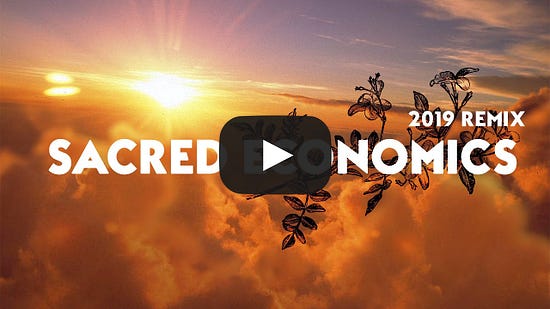 Whatever backs money, people make more of. When money was backed by cattle, people bred more cattle. When it was backed by gold, people mined more gold. So why not back money with more of the things that we want to see in the world: clean bodies of water, strong forests, biodiversity? This is another one of those ideas that seems too idealistic to be possible, until it worms its way into your head. Most currencies, other than the US Dollar, need to be backed by something to maintain stability. That’s true of fiat currencies and stablecoins. USDC is backed by dollar-denominated assets in its reserve, as is (supposedly) USDT (Tether). Combined, they have market caps of $133 billion, and roughly the same amount of dollar-denominated assets in reserve. Algorithmic stablecoins, like TerraUSD, aren’t backed by dollar-denominated reserves or anything, really, other than algorithmically buying and selling two related assets to keep the price at $1 (or whatever peg). Matt Levine describes how it works in a characteristically brilliant fashion in The Stability of Algorithmic Stablecoins, before acknowledging:
Even TerraUSD is now buying roughly $10 billion worth of bitcoin to back its stablecoin, and currently holds around $1.5 billion against an $18 billion market cap. Which is all to say – if people accept backing stablecoins with both nothing and other made up currencies, why couldn’t you back stablecoins with things that protect the planet, and have the added benefit of being stable themselves: natural capital backed assets? Celo’s Whitepaper, written in 2018 before ReFi was a thing, mentioned allowing “for the reserves to include real assets”:
Fast forward to today, and Celo’s Climate Collective has proposed transitioning 40% of the Celo Reserve (which backs the Celo Dollar, Celo Euro, and Celo Real stablecoins) to “transition to tokenized rainforest and other carbon sequestering assets to support natural capital backed currencies on the Celo platform” over the next four years. As an example, take one of the natural capital assets that might back a currency: rainforests. The rainforest is essentially a finite, valuable asset. It can serve as a reserve asset, backing currencies like gold used to back the Dollar. The difference was, gold could be melted into bars, stored in a vault somewhere, and easily tracked and counted; rainforests need to stay where they are to be valuable, and are much harder to keep track of. But with more satellites and sensors, better AI, and projects like Open Forest Protocol (OFP) that incentivizes distributed monitoring, reporting, and verification (MRV), accounting is no longer a dealbreaker. So projects like OFP can verify that a specific piece of the rainforest has been protected or reforested and issue tokens on Celo, and those tokens, representing pieces of the rainforest, can be programmatically bought into the Reserve as new cUSD are minted into circulation. If it hits its goal, and if Celo’s stablecoins grow to USDC’s size in the next four years, that commitment could make a meaningful dent in the fight to keep temperatures from rising over 1.5°C:  Already, Celo Reserve approved an on-chain governance proposal to allocate 0.5% of the Reserve to Moss’ MCO2 carbon credit token. Ledgard hopes that at some point, 5% of the Reserve will be in biodiversity tokens, like L-Marks. As importantly, that early commitment put out two signals:
Those two signals, sent out through the ReFi ecosystem’s mycelium network, have jumpstarted the ReFi movement and made Celo its unofficial on-chain home. ReFi Summer and Community as a Competitive Advantage Six months ago, if you had asked me what Celo was, I would have said, “Uhhh I think it’s an emerging markets crypto payments network.” If you’d asked me what ReFi was, I would have asked back, “You mean like a mortgage?” I remember having a call with my friend Ed Walters when he was considering starting a web3 x climate fund late last year, with a focus on the Celo ecosystem, and thinking, “Wow, that sounds cool but pretty, pretty niche!” But Ed’s rarely wrong, and I think he nailed this one. I’m just late. Thanks in part to the guidance of great people like Ed, who have been living and breathing the ReFi ecosystem, and my growing interest in using web3 tools to solve complex, real-world challenges – 30% of the dollars Not Boring Capital invested in web3 last quarter went to projects building on Celo. Crypto people like naming seasons. Two years ago, it was DeFi Summer. Last year, it was Solana Summer. Now, I think we’re about to enter ReFi Summer. (If you want a full overview of the ReFi movement, the companies involved, the opportunities, and the challenges, I highly recommend reading What is ReFi? by Toucan’s John Ellison) For our purposes, start with this quote from Jonathan Ledgard: “It’s really clear that there is at least $1 trillion of capital that wants to be driven into nature and out the other end in the next decade.” And that’s just nature. The demand for natural capital backed assets, and ReFi assets more broadly, is enormous. The question is how to create and verify the supply. KlimaDAO was an early attempt to marry existing carbon credits and the degens of DeFi 2.0. While it’s had some success, pulling 17.5 million tonnes of carbon offsets into the treasury, it mainly brought old, low-quality credits on-chain so that degens could “sweep the floor.” The real goal is incentivizing and financing new offset-creating projects. Klima’s biggest impact was likely bringing more attention to the space. Now, a wave of projects across the three pillars of a regenerative financial system that Sep layed out in the keynote – universal access to financial tools and UBI, community commerce, and health and biodiversity of global ecosystems – call Celo home. That’s Celo’s competitive advantage: pick a niche that seemed so early that I dismissed it, own it, and attract builders who want to come join an authentic ecosystem, who will make the ecosystem stronger, which will attract more builders, and on and on. So far, it’s working. This web3 Climate Map shows where climate projects are building today, and Celo seems to have a slight lead over Ethereum, despite that chain’s much larger overall size, and third-place Polygon. Celo’s system also looks the most densely-connected. If the map accounted for the fact that Toucan will build on both Polygon and Celo, a lot more of this map turns Celo green and it looks like the clear leader. Let’s take a look at a few of the projects building on Celo, across all three pillars. Universal Access to Financial Tools and UBICelo is becoming a home for products that aim to unlock peoples’ unique purpose by helping meet their subsistence needs so that they can focus on higher callings. We’ll look at two: Impact Market and Vana. Impact Market Impact Market, launched in 2020, as a “Decentralized Poverty Alleviation Protocol.” Already, it’s the biggest UBI project in the world and provides UBI to people making $1.90 or less where no one else can. Its dashboard highlights the numbers so far. Note that, despite the very low UBI rate per beneficiary of $0.57 per day, which would be harder to serve in a traditional model given overhead and costly distribution to the unbanked, Impact Market has actually distributed $12k more than it raised. That’s the power of mobile-first with low gas fees. Rene singled Impact Market’s founder, Marco, out as the “best possible founder type” for Celo:
Vana Vana is a Celo-based project that I’m particularly excited about and am backing out of Not Boring Capital. Its mission – to shift the flow of data for a more prosperous world – echoes Celo’s, potentially because its founder, Anna Kazlauskas, was an early engineer at cLabs. Vana uses decentralized tools to let people unlock and take back their data, monetize it, and bring it with them across the internet. “Data should be portable,” Anna explained. “And it should be something that empowers you. People want personalized experiences, but because of the way the data economy has worked, those experiences have just felt a little creepy.” By giving people the tools to enrich their own data and choose who to share it with, Vana expects to be able to generate meaningful revenue for data owners. I’m so excited about Vana because it’s another step towards a more fair economy, one in which people are rewarded for one of their most valuable assets, even if they had previously given up on claiming it as their own. In developed markets, Vana might provide a nice income stream and more control over data that’s rightfully yours; in emerging markets, using Vana could provide an ongoing living income and allow people to focus on things they didn’t think possible. Community CommerceA supportive community can be a form of wealth in its own right. In the keynote, Sep highlighted Etsy and Kickstarter, an early B-Corp, as examples of community commerce. And when Kickstarter decided to go web3, they decided to build on Celo. Kickstarter Since its founding in 2009, more than $6 billion has been pledged in crowdfunding campaigns on Kickstarter. People gave not for equity or a financial return, but to support the things that they want to see in the world, and maybe get early access to a product or a shoutout on a website. It’s so ingrained in the culture that one of the biggest pieces of pushback against funding DAOs is, “Why wouldn’t you just launch a Kickstarter?” In December, Kickstarter announced that it was going web3: “we’re supporting the development of an open source protocol that will essentially create a decentralized version of Kickstarter’s core functionality.” And they decided to do it on Celo:
This was a significant win for Celo for a couple reasons:
Kickstarter is opening up its protocol to others who want to build community commerce, so beyond the obvious impact, it should serve as a spark to ignite community commerce on Celo. Health and Biodiversity of Global EcosystemsTokenizing carbon and other natural capital is the segment of ReFi that’s captured the most attention and money to date, and for good reason. It represents an opportunity to create a new multi-trillion dollar market that makes the planet healthier and richer. Additionally, this is a use case for which crypto is uniquely well-suited: from decentralized MRV systems to more open asset registries to more liquid markets, combining crypto with advances in sensors, drones, and AI presents a unique moment in time to build a financial market that regenerates the earth’s natural resources. It’s early, but some of the foundational pieces are being put in place, three of the most important of which are being built on Celo: Toucan Protocol, Flow Carbon, and Loam. Toucan Protocol In April, Toucan Protocol and Celo made a big announcement: Toucan is coming to Celo. Toucan connects the voluntary carbon market to web3 through the Toucan Bridge, which tokenizes real-world carbon credits in exchange for semi-fungible Tokenized CO2 (TCO2) tokens. With the credits on-chain, they create a transparent meta-registry and pools of Base Carbon Tonne (BCT) and Nature Carbon Tonne (NCT) tokens to increase liquidity. As it says on its homepage, Toucan “brings programmable carbon to web3.” After initially launching on Polygon and getting traction for its BCT token via KlimaDAO, Toucan decided to go multi-chain and add Celo support in partnership with the Celo Foundation and the Climate Collective. The Toucan team laid out three reasons for adding Celo:
First, they’ll bridge BCT and NCT to Celo via the Curve Celo-Polygon bridge. Then, they’ll deploy the full protocol on Celo. They also plan to submit a governance proposal to the Celo Community for the Celo Reserve to accept BCT and NCT. Toucan’s decision is validation of Celo’s strategy in a couple of different ways:
It’s also a point for the argument that web3 will be multi-chain, and any ReFi project will need to at least have a presence on Celo. Flow Carbon Another project working to tokenize carbon credits is Flowcarbon. It’s creating the GNT token, backed by corporate-grade carbon credits it brings on-chain, and also providing the infrastructure to help corporations and individuals offset their emissions. When I asked Flowcarbon’s Phil Fogel why they chose to build on Celo, he told me that they looked at all of the L1s and L2s you’d expect, but that they chose Celo, which he called “the OG,” as home base for a few reasons:
He also said that Celo is the most likely place a community ecosystem would pop up, and that the people in the Celo ecosystem are “the nicest, most mission-driven people” in the space. Another check for the argument that, as long as the technical infrastructure passes the test, a focused and mission-aligned community can be a strong competitive advantage for an L1. Loam While Toucan and Flowcarbon tokenizer carbon credits, Loam’s plan is to actually “deposit carbon back into Mother Earth” and earn new offsets in the process. Founded by Birju Shah and Ravi Yenduri, Loam’s vision is to create a marketplace for farming data, a fast, easy, and transparent platform to incentivize farmers to engage in regenerative practices. As Ravi describes is, they want to create “change today that pays off in the long-term.” That’s a financing trick, exactly what ReFi is designed for. There are all sorts of things that farmers can do to capture and sequester carbon, or release less in the first place, for which they might receive offsets a few years out, which they’d then have to sell. Loam will make it easy to finance those changes upfront, by selling the future credits to companies that want to offset, to investors, or into pools on something like Toucan or Flowcarbon. To Ravi, the decision to build on Celo was simple: “They have a mission. Other chains don’t have a mission. Farmers ask why we’re doing something, and we asked the same thing.” Plus, Celo Reserve is a significant potential buyer of the credits that Loam produces, something that other chains can’t offer sustainably. Once again, it comes down to mission and Celo’s early commitment. The more Loams and Toucans and Vanas those things matter to, the more inevitable it will become that the next important ReFi project builds on Celo, until it’s the default. Each of these projects on its own is compelling, but appropriately, I think Celo’s power, and the power of the ReFi ecosystem more broadly, is how they all fit together. Flori Ventures co-founder and GP Tomer Bariach, an active investor in the ecosystem, described it as a “human and technological puzzle”:
Talking to Tomer, it struck me that the Celo community of builders itself was regenerative, each piece serving a unique purpose, each connected to the larger whole. And talking to Ed at Allegory, it struck me how prescient Celo’s focus on emerging markets was, how important a piece that is to the whole puzzle. “If you don’t involve these populations,” he explained, “it doesn’t matter. If Africa isn’t plugged in, it doesn’t matter. If India isn’t plugged in, it doesn’t matter.” Many of the credit-producing projects are located in the Global South – farms in India, rainforests in Brazil, wildlife protection in Kenya, etc… – and importantly, rely on local people to protect and verify. That work, paid for by developed countries, provides living wages for local people while also protecting the environment. It’s beautifully connected – environmental projects can create new tools and opportunities for financial inclusion as a byproduct. It’s little connections like that that I think make people in the Celo ecosystem so excited. Once you start seeing the benefits of more connected and regenerative systems, you start seeing them everywhere. It’s a little intoxicating, and the energy in the community is infectious. I felt it in every conversation I had. Phil at Flowcarbon described it perfectly, “My Celo Connect conference high hasn’t died down since I got home. These are people who actually care and want to build systems that benefit everyone.” Mission matters, particularly to mission-driven builders. Building a More Beautiful and Prosperous WorldIt should be clear at this point that I’m excited about what’s happening in the Celo ecosystem and that I’m unabashedly rooting for it to succeed, for my portfolio’s sake, sure, but also because I love the promise of regenerative financial models. If money is a story, and web3 is a chance to rewrite it, we should do so in a way that benefits the planet. There’s almost no trade-off: it would be better for stablecoins to be backed by assets that incentivize planet-positive behavior than to be backed by ponzi schemes. That said, there are challenges to building on Celo, namely liquidity. If a tree gets tokenized on a blockchain, and no one’s there to buy the NFT, did it really get tokenized? When I asked Ravi at Loam about the trade-offs, he admitted that “If you launch an NFT on Celo, you’ll get lower reach.” But then he added, “We were excited about making an NFT, and then we asked ourselves why we were doing it and we didn’t have a good reason, so we didn’t. That’s actually a benefit of a smaller community: when the audience is small, you’re more intentional about what you do.” Certainly, the Ethereum, Solana, Polygon, and other ecosystems have more active financial communities and deeper pools of capital buying assets than Celo does today. Other blockchains are able to offer projects greater financial incentives to build on them. But through the $100 million DeFi For the People initiative, Celo is partnering with DeFi blue chips like Curve, Sushiswap, and Aave. And on Friday, a governance proposal for a “green DEX” went out to the Uniswap community. That would mean more global users for Uniswap, and more liquidity for green assets on Celo. Beyond crypto liquidity, there are tens of billions of corporate, institutional, and individual dollars waiting on the sidelines to purchase and invest in regenerative assets as soon as they can be produced and verified. The hard part was that, without the yield-seeking missiles that other blockchain ecosystems have, that early liquidity was harder to come by on Celo, but it seems like we’ve reached a tipping point. Today, there’s a vibrant early stage funding ecosystem with funds like Allegory and Flori, partnerships with blue chip DeFi protocols to provide liquidity once tokens are created, and a standing bid from the Celo Reserve for quality natural capital assets. Ultimately, liquidity can be enticed to move, community and mission are impossible to fake. Plus, there’s something a little magical about a small but passionate community that’s built a movement out of the limelight. Building without the hype and yield farming and degens, focusing purely on how to build a regenerative financial system in the real-world using newly programmable money, feels more solid, more… sustainable. In his recent Atlantic essay, Jonathan Haidt wrote a line that I suspect I’ll be quoting often: “There is a direction to history and it is toward cooperation at larger scales.” I’ve written before that the crypto’s superpower is that it can give digital assets physical properties with digital superpowers. I think Celo’s magic might be providing the tools to recreate the cooperation and trust of a local community on a global scale. When I asked Ed Walters what city Celo is like, he called it a “robust, alive, vibrant neighborhood.” Local environmental movements have felt a little like the Lorax – incredibly well-intentioned, but lacking the tools to make a real impact. Celo, and the ReFi movement, might provide the tools to level the playing field by connecting the interests and contributions of people around the globe, and by backing a new money with the things we want to see more of in the world. Money is just a technology, and today, people can program money to do all sorts of things, like align incentives across people, species, and time. And technology is a story with wings, so let’s end with another story. Kim Stanley Robinson’s The Ministry for the Future – a near-future sci-fi novel that follows fictional characters as they experience, and try to deal with, the impacts of climate change – is the grownup version of The Lorax. It was one of Barack Obama’s favorite books of 2020. Since it’s the grownup version of The Lorax, The Ministry for the Future doesn’t leave the planet’s survival up to a small, talkative little creature. What the titular Ministry suggests instead is “some kind of carbon coin. This to be a digital currency, disbursed on proof of carbon sequestration to provide carrot as well as stick, thus enticing loose global capital into virtuous actions on carbon burn reduction.” In the sci-fi version, a decade into the future, when things are too far gone for small actions, the carbon coin is “backed by hundred-year bonds with guaranteed rates of return, underwritten by all the central banks working together.” The carbon coin is an answer to both the tragedy of the commons, and what the book called “the tragedy of the time horizon. Meaning we can’t imagine the suffering of the people of the future, so nothing much gets done on their behalf.” In other words, the carbon coin is kind of like the SuperLorax – it speaks for the trees, the animals, and future generations, and it does more than speak: it creates a new financial system that accounts for all of the interests that the old one, using older financial technology, couldn’t. That’s the promise of Celo: that it gives people a set of tools with which, and an ecosystem within which, to build a new financial system that creates the conditions for prosperity for everyone by better accounting for everyone’s debits and credits, extractions and contributions. Celo doesn’t want to do it alone. It’s not going to be the blockchain to end all blockchains. It just wants to fulfill its own unique purpose as the mission-driven home neighborhood for ReFi within a connected, multi-chain ecosystem working together to create a regenerative economy. I think this is how the financial system would have been built all along if humans had had the right tools and technology. We do now. The goal is to build a new regenerative system before it’s too late. Thanks to Rene, Ed, Tomer, Marek, Phil, Ravi, Mike, Anna, Sep, Jonathan, and Deana for your conversations and contributions to this piece, and to Dan for editing. Thanks for reading, and see you on Thursday, Packy If you liked this post from Not Boring by Packy McCormick, why not share it? |
Older messages
The Invisible Hand's Visible Swarm
Tuesday, April 19, 2022
Or, Why I'm Optimistic the Problems that Matter Will Get Solved
The Not Boring Liquid Super Team
Monday, April 11, 2022
Not Boring Turns Two, Fund Quarterly Update, and Growing the Team
Hadrian: Ex Machina Ad Lunam
Monday, April 4, 2022
Meet the Anti-Decline Company Building to Keep the Solar System Free
The Current Financial Thing
Monday, March 28, 2022
Everyone's a Bear. Does that mean you have to be, too?
Ramping Up
Monday, March 21, 2022
Ramp raises $750 million at $8.1 billion in Founders Fund-led Round
You Might Also Like
🔮 $320B investments by Meta, Amazon, & Google!
Friday, February 14, 2025
🧠 AI is exploding already!
✍🏼 Why founders are using Playbookz
Friday, February 14, 2025
Busy founders are using Playbookz build ultra profitable personal brands
Is AI going to help or hurt your SEO?
Friday, February 14, 2025
Everyone is talking about how AI is changing SEO, but what you should be asking is how you can change your SEO game with AI. Join me and my team on Tuesday, February 18, for a live webinar where we
Our marketing playbook revealed
Friday, February 14, 2025
Today's Guide to the Marketing Jungle from Social Media Examiner... Presented by social-media-marketing-world-logo It's National Cribbage Day, Reader... Don't get skunked! In today's
Connect one-on-one with programmatic marketing leaders
Friday, February 14, 2025
Enhanced networking at Digiday events
Outsmart Your SaaS Competitors with These SEO Strategies 🚀
Friday, February 14, 2025
SEO Tip #76
Temu and Shein's Dominance Is Over [Roundup]
Friday, February 14, 2025
Hey Reader, Is the removal of the de minimis threshold a win for e-commerce sellers? With Chinese marketplaces like Shein and Temu taking advantage of this threshold, does the removal mean consumers
"Agencies are dying."
Friday, February 14, 2025
What this means for your agency and how to navigate the shift ͏ ͏ ͏ ͏ ͏ ͏ ͏ ͏ ͏ ͏ ͏ ͏ ͏ ͏ ͏ ͏ ͏ ͏ ͏ ͏ ͏ ͏ ͏ ͏ ͏ ͏ ͏ ͏ ͏ ͏ ͏ ͏ ͏ ͏ ͏ ͏ ͏ ͏ ͏ ͏ ͏ ͏ ͏ ͏ ͏ ͏
Is GEO replacing SEO?
Friday, February 14, 2025
Generative Engine Optimization (GEO) is here, and Search Engine Optimization (SEO) is under threat. But what is GEO? What does it involve? And what is in store for businesses that rely on SEO to drive
🌁#87: Why DeepResearch Should Be Your New Hire
Friday, February 14, 2025
– this new agent from OpenAI is mind blowing and – I can't believe I say that – worth $200/month

